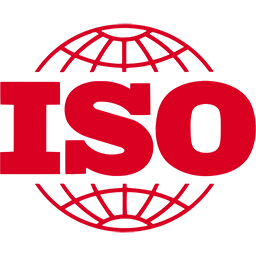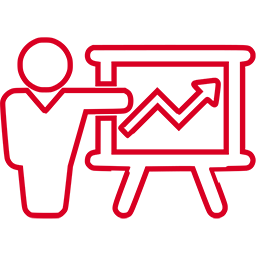
ISO / IEC 17025 is a standard that applies to laboratories in various industries and ensures that standards for laboratory testing and calibration are followed in practice.
More
Recently, we have begun to accumulate events that we are not used to in our latitudes. Apart from the pandemic, we have certainly all caught a tornado in Moravia and other extreme weather events. ISO 22301 specifies business continuity requirements and rules and helps companies recover quickly from unforeseen events. Its aim is to prepare companies and protect them in the event of such an exceptional unforeseen event.
More
The revision process of ISO/IEC 27001 and ISO/IEC 27002 is currently underway (the current version was published in 2013). Organizations that focus on a systematic approach to information security management have certainly registered this innovation. ISO/IEC 27002 is again designed to provide a framework for information security management (similar to, for example: NIST CSF).
More
In order to maintain your certification and meet the requirements of ISO standards (in order to achieve successful annual surveillance audit results), you need to perform several activities on a regular basis. Any "weaknesses" found in your management system can result in major systemic or minor nonconformity.
More
Obtaining an ISO certificate for an entrepreneur or your company is not always an easy task. Anyone who has already gone through this process can confirm that this process can be very laborious and time consuming. After obtaining ISO certification, people tend to take a break from the project and then willy-nilly forget the management system and leave it uninterrupted for several months, approaching the time of the first surveillance audit, which tends to surprise, and the requirements of the so-called standard are then slop-built. How can you prevent this scenario in your business? Let's imagine what you have to do when your company achieves ISO certification.
More
The COVID-19 pandemic has had unexpected serious consequences for the economic growth of many organizations. Organizations face the difficult decision of how best to use their resources to survive in these uncertain times.
More
The IATF Group has released the latest sanctioned interpretations on its website. Last IATF 16949: 2016 SI, number 20, which relates to requirement IATF 16949: 2016; 10.2.3 Troubleshooting, adds to the organization's documented problem-solving process (es) that it must (a) PREVENT RECURRENCE.
More
For both types of audits (internal and external), the audits are performed by a team of competent auditors meeting the requirements of Chapter 7. Competence of auditors - ISO 19011 standards in the composition of the Auditor and Auditors. In addition, external auditors must meet the requirements set out in the "Auditor's Knowledge and Skills Table" in accordance with ISO/IEC 17021-1.
More
What are the most common problems according to the results of third-party audits (certification bodies) in the IATF world database for organizations applying the requirements of the automotive standard IATF 16949:2016
More
In the ISO world, all management system standards (ISO 9001, ISO 14001, ISO 45001, etc.) require the company to have an internal audit and a system to perform regular internal audits. Many company owners think that internal audits are usually only needed for larger companies and mostly only for financial audits. The primary objective of ISO internal audit is to regularly review critical key business processes to ensure that the management system meets the requirements of the relevant ISO standard, as well as the organization's own internal requirements, that the system operates effectively and is maintained.
More
EN ISO 13485:2016 standard is accomplished and intended for use in organizations that deal with the design, development, manufacture, installation, service and sale and distribution of medical devices. It is now gaining prominence relatively quickly and is becoming the standard for organizations operating in the medical device industry.
More
In the article you can read about the standard ISO 41001 Facility management - management system, for which type of organizations it is suitable, what it is used for and what is the procedure for successful implementation of the standard.
More
Create a new future for your company with innovation management standards. It's about creating value and helping organizations constantly adapt and evolve. Innovation is not just about ideas, but mainly about their implementation.
More
The technical requirements for steels and cold-formed structures used in roofs, ceilings, floors, walls and perimeter cladding have been removed from this part of EN 1019 as they are specified in EN 1090-4. Informative Annex B with guidance on design classes has been removed as the normative requirements for the selection of the design class are now included in EN 1993-1-1:2005 / A1:2014, Annex C.
More
EN ISO 13485:2016 standard specifies the requirements for a quality management system where the organization must demonstrate its ability to provide medical devices and related services that meet customer requirements and applicable regulatory requirements. It is flexible enough to meet the individual needs of different types of medical device organizations. EN ISO 13485:2016 standard does not specify detailed requirements but requires the medical device organization to identify those stakeholder requirements that are relevant to its individual needs and integration into the QMS.
More
The organization must ensure that contractors and their employees meet the requirements of the organization's OHS management system. The intermediation and purchasing organization process (es) must define and apply occupational safety and health criteria for the selection of contractors. It may be useful to include occupational safety and health criteria in the contract documents.
More
The present is marked by bringing increasing demands on the practical application of IT solutions to companies. This trend is so strong that even small companies operating in various industries are trying to keep up with the times. Thanks to unique IT solutions and applications, they can be closer to clients and at the same time it is possible to simplify the order execution process. It is an expanding market in which growing competition is gradually emerging. The ISO / IEC 20000-1 standard is a suitable tool for standardizing and improving the provided services and at the same time credibly prove to the customer the level of provided services.
More
This International Standard has been designed to help organizations and individuals improve, enhance and standardize the sustainability conditions of the services they offer to customers or subscribers, sometimes with positive and negative social, economic and environmental impacts.
More
First of all, it must be acknowledged that there is no precise guidance on how to keep the 5S method working. We will not reveal a revolutionary solution to you here either. In such a case that would be very easy. We will try to provide you with a few tips and tricks so that your employees do not consider 5S annoying and that they cooperate in its maintenance and functionality.
More
At the joint initiative of the representatives of AIAG and the VDA, the institutions, each of which has its own manual for the analysis of possible FMEA errors, meetings of representatives of both institutions were held in order to unify these methodologies
More
The certification audit is focused on checking compliance with the requirements of the ISO 9001 standard. In order for an organization to be certified, it must have a fully functional quality management system in place. The basic requirement of the ISO 9001 standard is to establish, document, apply and maintain a quality management system and to continuously improve it. We bring you 10 main shortcomings, in the occurrence of which the organization cannot be certified according to the ISO standard...
More
How to deal with the context of the organization - ISO 9001:2015, point 4 of standard? If the organization has developed a quality manual according to the ISO 9001:2008 standard, then there should be no big problem in dealing with the context of the organization. Why? In the quality manual, there is a section on getting to know the organization, which usually contains the following: basic information about the organization, information about products and services, vision and mission of the organization.
More
The basis for the successful implementation of the management system in the company is the effective implementation of policies, goals and processes formulated by the company's management. Managers must be 100% convinced of the meaning of the implementation project. The success or failure of the implementation of the management system often lies in the compatibility of the requirements of the management system with the business philosophy. When the management system is built according to the requirements of the ISO standard and in accordance with the company's business philosophy, there are good prospects for positive results of the implementation of the management system.
More
There are three ways to implement a management system. We will introduce all three and evaluate their pros and cons. Implementation of the management system with the self-help, with the help of a consulting company or only with the partial help of a consulting company.
More
Are you thinking about how to start a management system, so that you lead your company to successfully obtaining a management system certificate? We have summarized for you the most frequently asked questions we receive from people who have first encountered the term “management system”. We will gradually go through the answers to the questions that bother many entrepreneurs or beginning quality managers.
More
Risk management is a continuous, repetitive activity of interrelated activities, the aim of which is to manage potential risks, i.e. to reduce the probability of their occurrence or to reduce their impact. However, it must not be forgotten that the risk arises even if the organization does not manage its opportunities and does not look for new market entry opportunities.
More
Harmonized standards EN 1090 are set by European standardization organizations, which specify the methods and criteria for assessing the parameters and essential properties of construction products.
More



